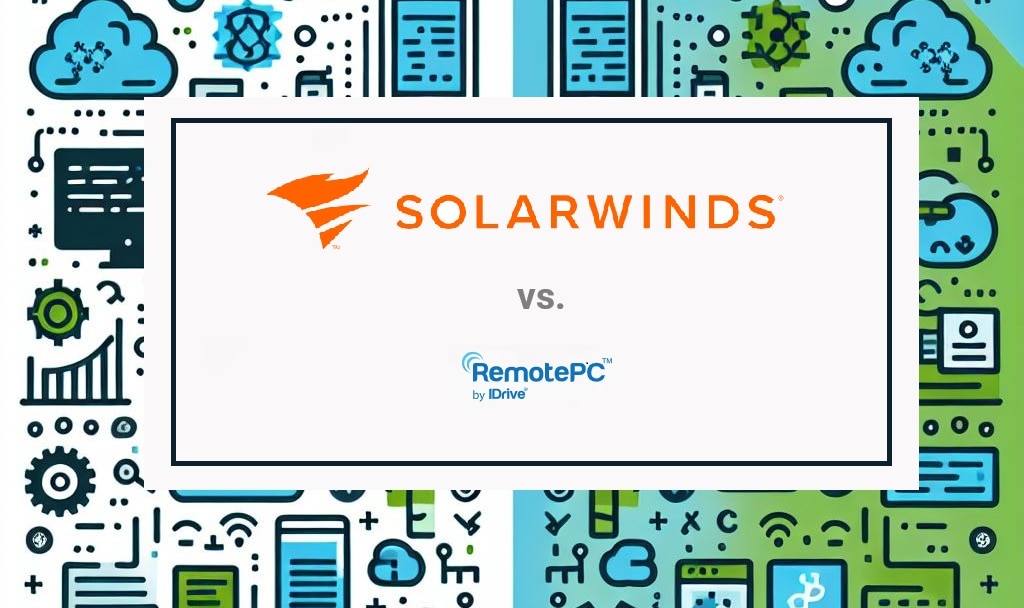The Evolution of the Web and Digital Experience Monitoring
Digital Experience Monitoring (DEM) is so business critical that it’s featured in a Gartner magic quadrant. At the same time, it is so new that even Wikipedia does not know what it is. (related read: What is Digital Experience Monitoring (and Why Should You Care)? Why is that? Monitoring as a practice is as old as dirt,…
Why Cloud Is Best For Log Management
Log data is the currency for companies trying to evolve in today’s digital world. To meet increasing customer demands, critical compliance requirements, and scaling application needs, it’s essential to collect and leverage massive data flowing across multiple sources and environments (cloud, on-premises, containers, etc.). Log analysis gives you valuable insights into business-critical events, real user…
What Is Digital Experience Monitoring and Why it Matters
Today, businesses are investing heavily in digital technologies to improve different aspects of their business and get an edge over the competition. Customers are at the center of most of these digital initiatives, and businesses are always seeking better tools and systems to track customers and understand their needs. Businesses need to understand how their…
Differences Between RemotePC Attended Access and Dameware Attended Access
In today’s interconnected world, remote support solutions are essential for businesses and IT teams to assist users effectively. Among these solutions, RemotePC and SolarWinds® Dameware® are leading tools offering attended access capabilities. However, choosing the right tool requires thoroughly understanding its unique features, advantages, and ideal use cases. This article provides an in-depth comparison of…
The Ultimate Guide to the Best SFTP Servers in 2025
Secure File Transfer Protocol (SFTP), also known as SSH File Transfer Protocol, is a robust, encrypted method for transferring files across networks, designed as a more secure alternative to traditional File Transfer Protocol (FTP). Essential for industries handling sensitive data—like finance and healthcare—SFTP protects against unauthorized access and enables efficient file management, making it a…
How to Open and Check Server Log Files
Wondering how to check logs from your servers, and why? Whether web servers, application servers, file servers, or another type, your servers constantly generate log files based on activities and events, and your ability to review these files is the key to fast, effective troubleshooting. Server log files offer “behind the scenes” views into server…
Best FREE Syslog Servers
Every minute, your routers, switches, printers, firewalls, and more are sending syslog messages regarding their activity and overall functioning. To collect—and make sense—of these messages requires the use of a syslog server. With so many syslog servers on the market, finding the right one for your IT team depends on the size of your company,…
Best Syslog Servers in 2024
Logging is a critically important part of managing an IT environment, as it helps you spot issues with the system and reveal problems. Syslog is a kind of messaging protocol devices use to send messages about their status, events, or diagnostic information that can help with errors and troubleshooting.
Syslog Monitoring Guide + Best Syslog Monitors and Viewers
Syslog is a network-based logging standard used for applications to send data to a central server, providing information on events, statuses, diagnostics, and more. Unlike SNMP, which is an active approach to monitoring (aimed at preventing the occurrence of incidents), Syslog monitoring provides a passive approach, which allows you to deal with incidents after they…
Wi-Fi Bandwidth—Test and Monitor Bandwidth (And Three Recommended Tools)
IT admins know the importance of wireless network bandwidth when it comes to maintaining network performance. After all, if you have too many high-energy devices and applications putting a strain on your Wi-Fi or WLAN bandwidth, both your network performance and your end-user experience will suffer. How do you identify those bandwidth hogs, and how…
Top 3 Help Desk Software Solutions for Small Business
While it’s common for end users to run into problems with products or services, they expect a prompt and seamless support experience. The help desk function acts as a central point for this experience and plays a prominent role in helping small businesses achieve end-user satisfaction. To run an effective help desk, leverage help desk…
Wi-Fi Management – Recommended Software for Business and Guide
Many businesses rely on Wi-Fi for business productivity, particularly with the rise of BYOD policies. But if too many devices use an under-resourced Wi-Fi network, productivity can quickly slow to a halt. Wi-Fi management software offers a solution, by offering an automated way to monitor and analyze Wi-Fi devices, traffic, and other relevant Wi-Fi activity….
Dameware Mini Remote Control Guide: Overview, Pricing & Download
In today’s fast-paced IT environment, having robust and reliable remote support software is non-negotiable. That’s where SolarWinds Dameware® Mini Remote Control (MRC) steps in. This comprehensive guide delves into what Dameware MRC is, how to use it, its pricing structure, and how to download it. Whether you’re an IT professional looking for an efficient way…
Top 12 Remote Access Software for Efficient Connectivity
Today, the workforce is more geographically dispersed than ever before. In the past, remote access was primarily used by IT teams or freelancers who needed to access specific resources from afar. For several years, remote work has been gaining traction, and the COVID-19 pandemic accelerated the adoption of remote and hybrid work environments. Now, businesses…
How to Access Linux Desktops From Windows Remotely
Whether you need to allow employees to efficiently work from home or branch offices, or you want to facilitate troubleshooting tasks for the IT team, remote access is critical. For many IT support workers, providing remote support to users and remotely accessing devices has become an everyday necessity. Remote desktop connection for Linux systems from Windows machines…
3 Popular Methods to Shut Down or Reboot a Remote Computer
Managing IT systems in interconnected environments often requires shutting down or rebooting remote computers for several reasons. For instance, you might want to reboot the computer to troubleshoot errors and address software updates. Or you might shut it down as part of your security protocols. In this post, you’ll learn three popular methods for rebooting…
Best Network Traffic Generator and Simulator Stress Test Tools
Benchmarking the environment of a new network is a crucial part of ensuring its success when it goes live. This includes stress testing and generating traffic on existing networks, both of which help you to identify any potentially flawed or vulnerable areas—for example, drops in connection and packet loss. As we know, network traffic is…
What Is Cloud Monitoring? A Guide Through the Best Tools
As more businesses embrace digital transformation, cloud computing is becoming more relevant each day. Cloud technology provides the flexibility, scalability, and agility modern organizations need to stay competitive, transforming everything from daily operations to customer experiences. However, as companies expand their use of the cloud, managing these complex environments is proving to be a real…
Hybrid Cloud Monitoring: A Comprehensive Guide to Strategies, Best Practices, and Tools
Modern infrastructures are no longer confined to on-premises servers alone. Instead, they span cloud environments, containers, microservices, and globally distributed systems. This landscape, known as a hybrid cloud environment, has become the new norm for organizations, primarily because it offers the scalability of the cloud and ownership over specific elements afforded by an on-premises setup….
Real-time Monitoring – Guide to Real-time Network Monitoring
Maintaining a reliable and secure network is essential for businesses of all sizes. Real-time network monitoring has become crucial, allowing organizations to monitor their network performance and security at every moment. This guide will explore what real-time monitoring entails, how it works, and why it matters for your organization. We will also look into some…
What Is Infrastructure Monitoring? – 6 Best Software for Infrastructure Monitoring
Infrastructure monitoring is the continuous and systematic observation of infrastructure components that collect and analyze an organization’s data, ensuring efficient and reliable operations. What is infrastructure monitoring? How Does Infrastructure Monitoring Work? Infrastructure monitoring for cloud environments Methods of Collecting Data for Monitoring Infrastructure Monitoring Use Cases What Are the Best Practices for Infrastructure Monitoring?…



